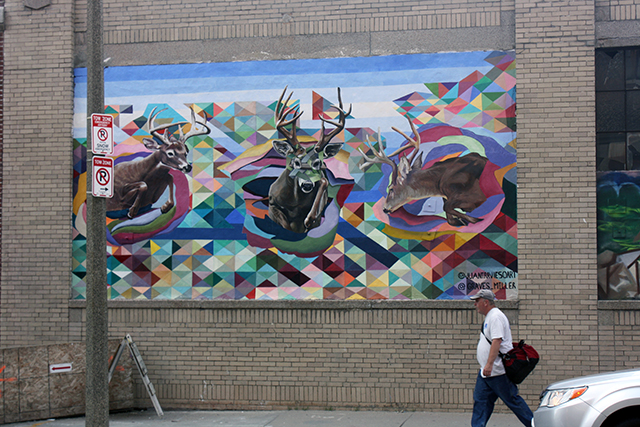
In between SoWa’s new, architecturally conservative condo buildings there are smatterings of hipstery murals, such as this one from Juan Travieso and Graves Miller.
I have been to Boston more times than I can count, but I have never been able to tap into the local art scene. That’s always struck me as odd—dense and bustling Boston is noticeably full of young people, cultural resources, and the type of wealthy people who seem like they would be ecstatic to throw money at the arts.
When I was visiting last week, there was a sentiment I heard echoed by nearly every artist I spoke with: Boston has great schools and museums, but outside of established institutions it can be a challenge to locate an art community. Gentrification moves at New York speed without as much of the sheer critical mass of artists and artist-run spaces.
But while Boston’s notorious housing shortage and high prices might preclude new organically occurring artist enclaves, one developer is proactively striving to incubate an arts district from the top down.
In the early 2000s, around the time the new bus rapid transit line, the Silver Line, opened on Washington Avenue in Boston’s South End, developer Mario Nicosia and his company GTI Properties rebranded the industrial area on the neighborhood’s southern edge as [cringe-worthy] “SoWa.” Today, GTI Properties’ holdings have been redeveloped as a mix of housing, studio, retail, and office space. According to one artist I spoke with, the developer offers below market-rate rentals for artists and galleries in his converted warehouses and mills—presumably boostering the neighborhood’s “cool factor” for the tenants willing to pay higher rents in the increasingly upscale area.
I’m usually suspicious of developer-driven support for the arts, and here there’s no guarantee that the spaces will remain affordable. No laws mandate that the arts district—which is more or less owned by one landlord—has to maintain cheap rents for artists and galleries once the property values rise. But there is pretty solid work on display in the area. And in a city that’s rapidly running out of room thanks to expanding universities, a booming tech industry, and a NIMBY-friendly zoning code that makes it difficult to grow upwards, finding any space for artists’ studios and galleries is a win.
The shortage (and consequent priciness) of real estate in Boston might explain the near total absence of artist-run galleries, DIY venues, and alternative art spaces in the city. When I walked around SoWa and chatted with artists and gallerists, almost no one could recommend an artist-run space. At Carroll and Sons, a gallery in a large converted warehouse complex at 450 Harrison Avenue, gallerist Joseph Carroll summed up his take on the scene as a dozen galleries involved in what he described as “the commercial discourse.” Of those twelve, only one of them, kijidome, is a cooperatively-run art space.
The group behind kijidome—named after its founders Lucy Kim, Carlos Jiménez Cahua, Sean Downey, and Susan Metrican—has been selected as a recipient of the 2015 James and Audrey Foster Prize. Although kijidome didn’t seem to have gallery hours while I was in town, I got to check out the collective’s curatorial ethos at the ICA, where they organized a really solid exhibition as part of the award.
I’ll go into more detail about kijidome’s show here, but below, here are some highlights from SoWa’s galleries. The area seems to have attracted a big contingent of furniture stores and design showrooms—which is definitely reflected in the decor-friendly (but still mostly conceptually sound) offerings on view at the commercial fine art galleries that line the pedestrianized zones between the neighborhood’s old industrial buildings.
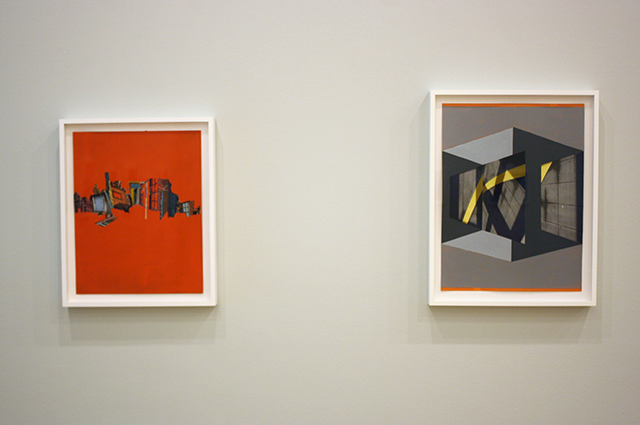
At Carroll and Sons, Mary Lum’s mixed-media work combines photography and collage with references to painting. The series was inspired in part by the Situationist International’s theories of psycho-geography and the derive.
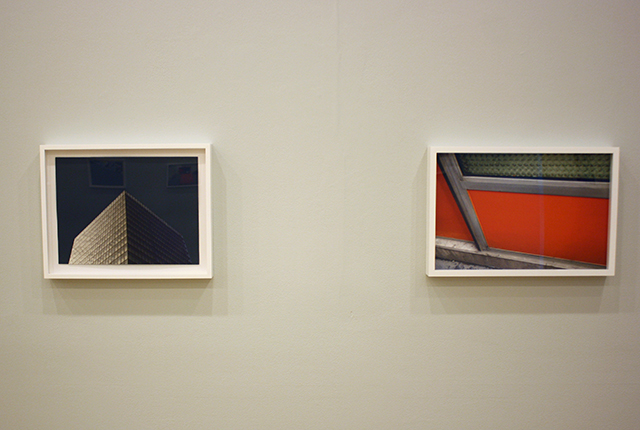
Lum’s series comprises constructed images that evoke photographs of architectural space or actual photographs of painterly moments in the built environment. Part of what makes the series so fun is the often-deceptive play between the two.
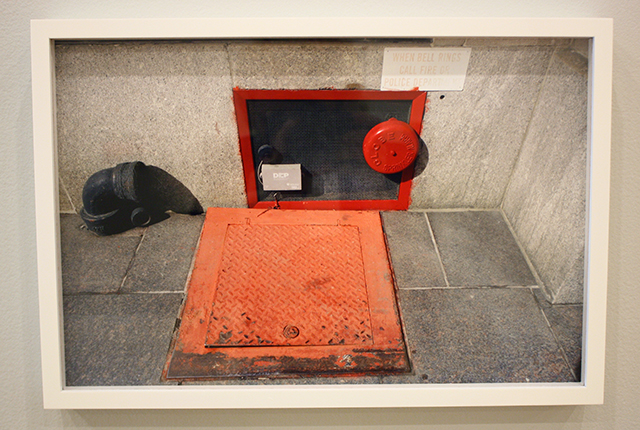
Although Lum shot the photos in the series primarily on walks around Paris and New York, they feel very relevant to Boston. A lot of the work I saw in town referenced the built environment or construction—obvious concerns in a city where nearly everyone has been talking about gentrification, real estate, and anxiety over displacement or change. This image stuck with me because it’s so straightforwardly legible as an index of the patina and accidental charm older buildings accumulate. It’s exactly the level of detail that’s absent from the slew of new, faux-historic low-rises creeping across Boston and so many other cities.

In the same complex, Galatea Fine Art is showing paintings by Lisa Reindorf. These were inspired by a residency in the south of France and also relate to the manmade landscape. The pieces are abstractions based on aerial views of Mediterranean villages, pools, architectural details, and coastlines.

Reindorf is a former architect and that logic is reflected in her work—each canvas is conceived of as a tile that can be recombined with others in the series to suggest a new narrative.
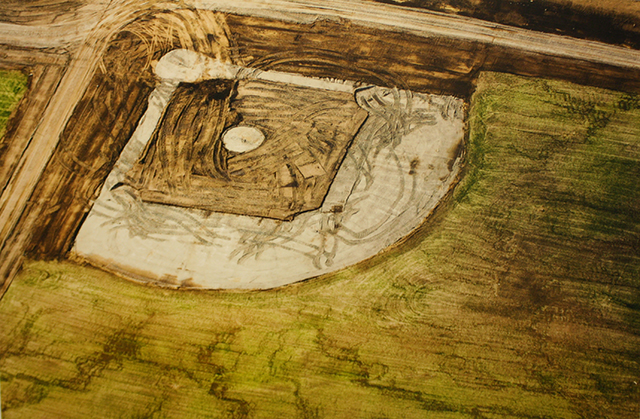
Next door, at Miller Yezerski Gallery, the painterly aerial landscape got the photographic treatment in this piece by Alex MacLean. The group exhibition “The Disrupted Landscape” featured documentation of manmade interventions in the environment.
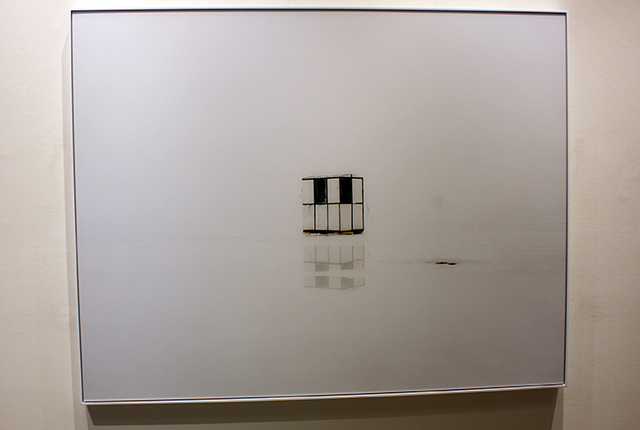
Of all the photos of environmental devastation, this minimalist shot of a lone structure on the ice by Scott Peterman is my favorite.
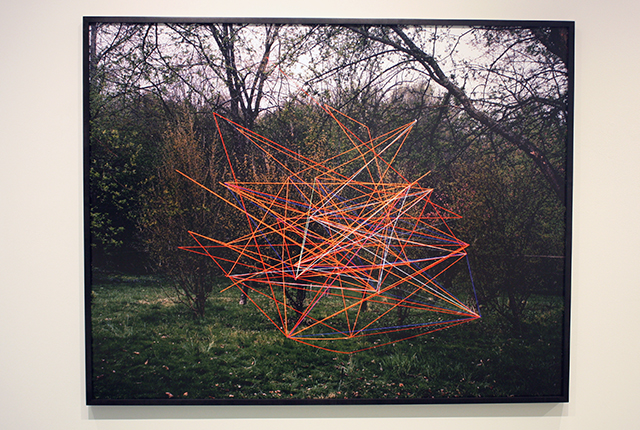
Rather than document found evidence of the manmade in landscapes, Thomas Jackson stages interventions that dialog with contemporary painting. And then he photographs them.
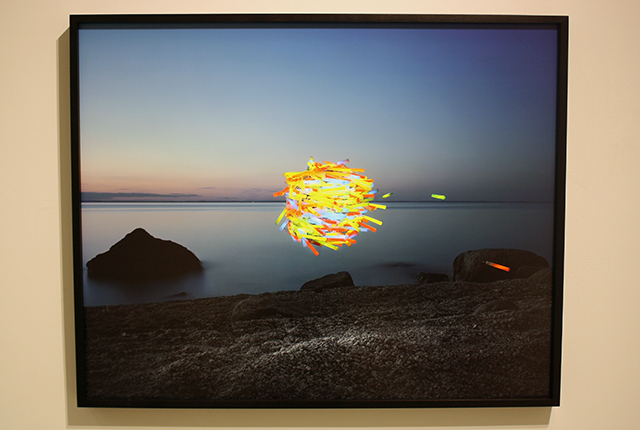
Jackson’s work—like this photograph of glow sticks against a beach at dusk—is totally the showstopper here. In an exhibition that’s a little depressing, his work instills a sense of wonder—if only for an instant—and seems like an almost-optimistic nod to the potential for the artificial to be beautiful without a sense of the sinister. I was reminded of Paddy’s recent post about a return to trompe l’oeil strategies in analog photography.

A few blocks north, at pinkcomma, the artist Fred Scharmen has an absurdist proposal to explore the solar system with manatees, robots, and rabbits. The exhibition includes drawings, digital prints of 3D renderings, and found objects from plastic animals to model space ships.

This is the interior of one of the proposed habitat ships. One of the things I like the most about the “Nonhuman Autonomous Space Agency” is how successfully certain images parody the aesthetics of utopian renderings. Fred (who I know from Baltimore) used to be an architect himself. On a wholly personal level, it was funny to see a project of his that is not directly relevant to urban issues and the built environment, as that is his field of expertise, especially in the context of many other exhibitions that touched on architecture and urbanism on the same day.

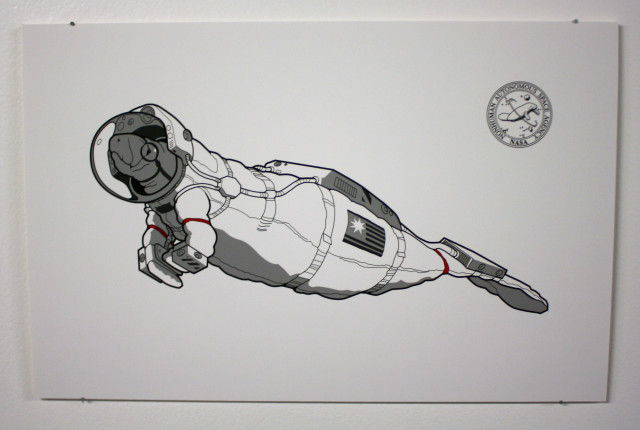

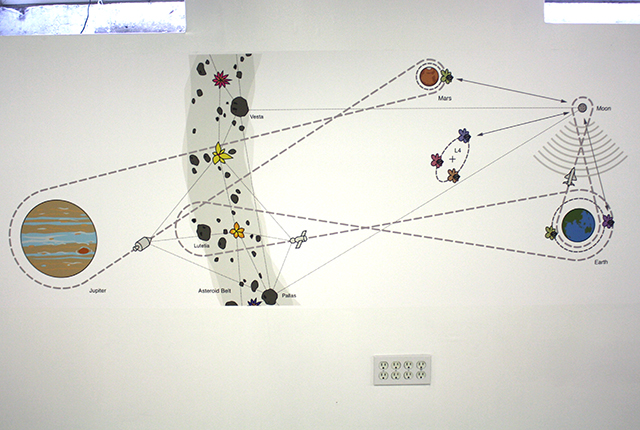
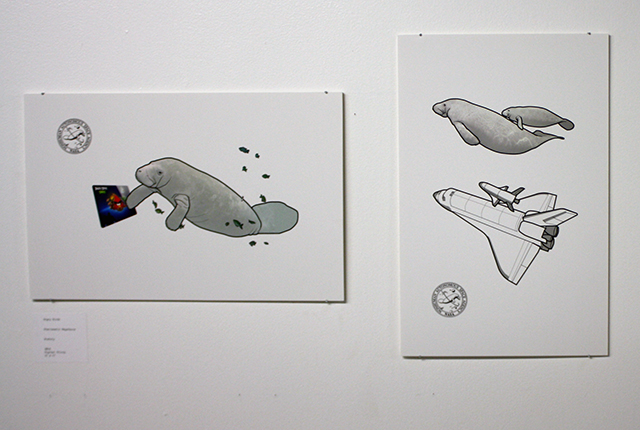

Comments on this entry are closed.